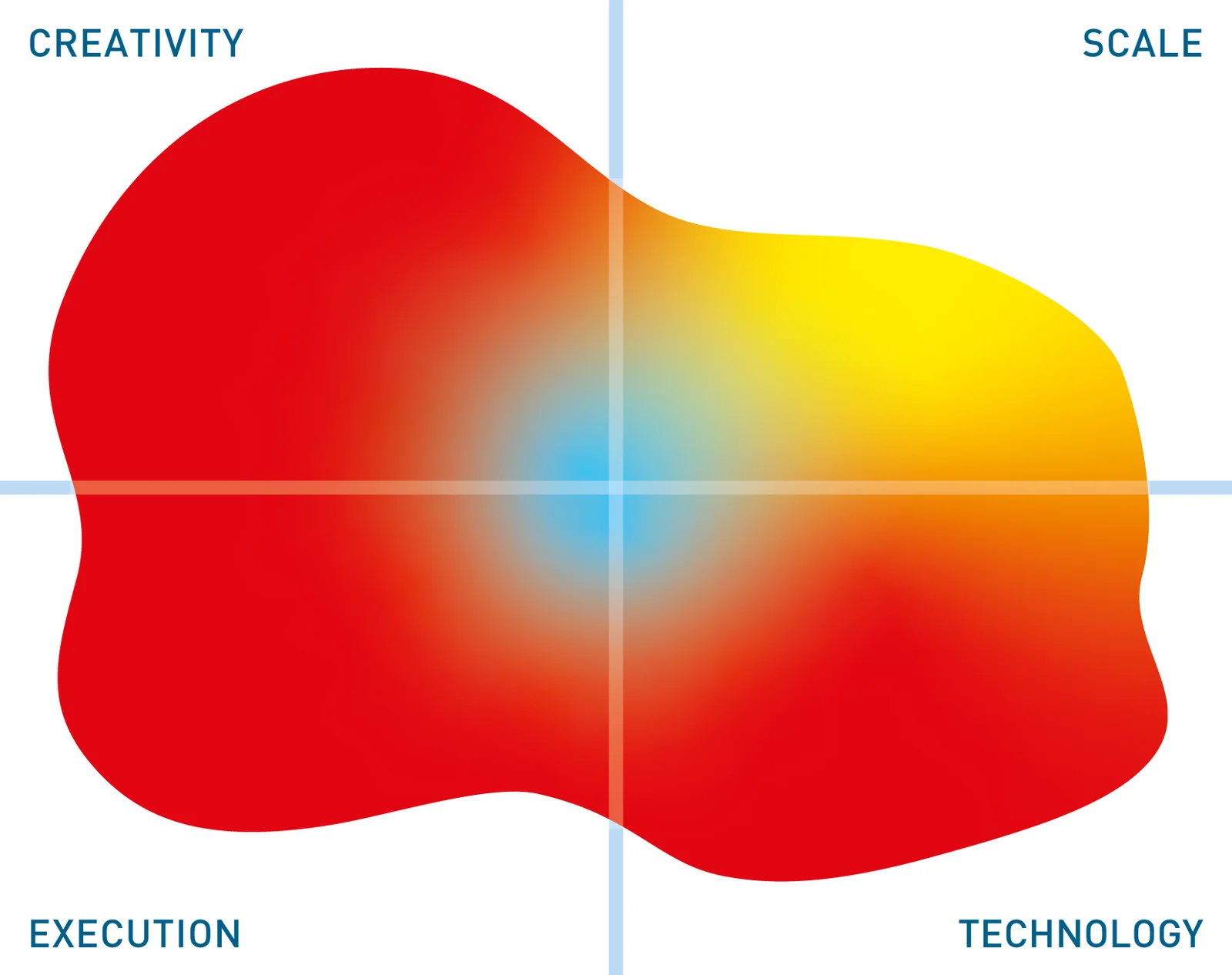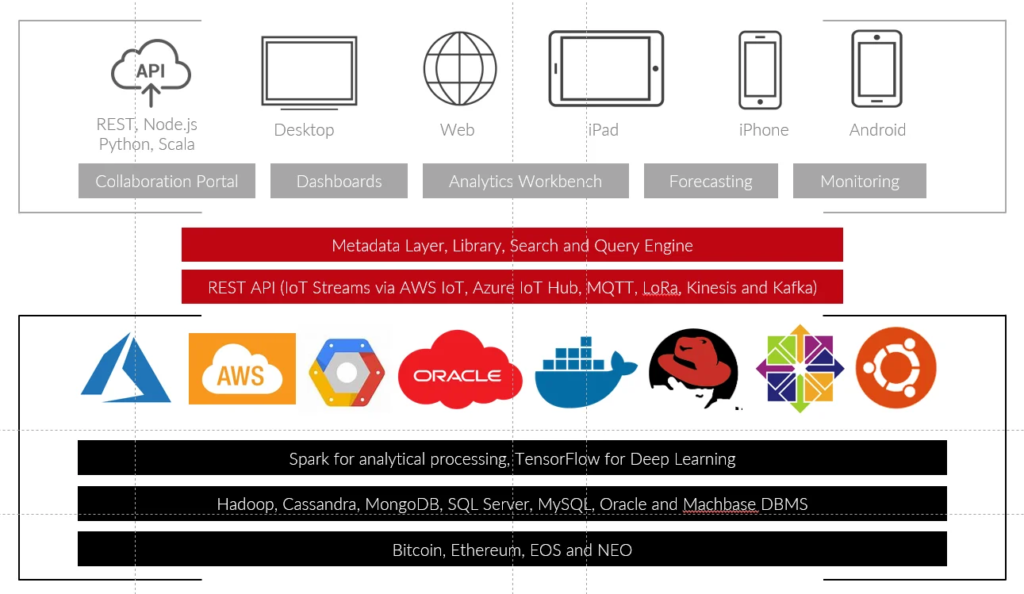Trendalyze
Update solution on February 28, 2020

Trendalyze describes its core capability as the discovery of motifs (and anomalies) within time series data. You can think of a motif as a micro-pattern but it is more accurately a shape. Figure 1 provides an example, where a recurring motif is highlighted in red. Once a motif of interest is discovered, or defined, then Trendalyze will search through your time-series data to look for recurrences of that motif or for occurrences of shapes that resemble, within parameters that you define, the motif in question. You can then raise alerts that will be generated as this motif is recognised in real-time.

Fig 01 Discovering recurring motifs
The architecture of the product is shown in Figure 2. As can be seen, the software is provided as a service running in the Cloud (Azure, Amazon or Oracle) or you can deploy it on-premises. The databases shown are examples rather than being a comprehensive list.

Fig 02 Trendalyze architecture
There are several supported technologies whose presence in this diagram is important to note, especially the support for Spark and TensorFlow, for example, to support machine and deep learning, though there is also an in-built machine learning module (based on metadata) that supports recurrent neural networks and linear regression. There is also integration with Internet of Things (IoT) platforms and Apache Kafka. Also notable are the collaboration portal and dashboards, which are intended to allow Trendalyze to be used by business analysts and others who do not have deep technical skills.
Customer Quotes
“[Using Trendalyze] we could flag churn or reduced spend with 75% precision.
Our results were much superior to Machine Learning based predictive approaches where the observed precision was under 50%.”
RummyCircle.com
“Trendalyze provides really powerful and yet intuitive tools for pathology research, detection and monitoring. When you collect 200 readings per patient per second, an you monitor 35,000 patients, you need discovery, analysis and search in one toolbox that scales.”
Checkpoint Cardio
The way that Trendalyze works is that you inspect time series data looking for micro-trends (motifs) that are of interest. Take predictive maintenance as an example. What you are trying to achieve is to predict when a particular asset is likely to fail and repair it before it does so. To do this you require a large body of historical time series data. Instead of developing a machine learning model, with Trendalyze the software – using built-in machine learning algorithms – will identify specific micro-trends in the time-series data that can be used to make these predictions: once a relevant motif has been found you can use this as your predictor. And, specifically, while it may be relatively easy to spot a pattern – when displayed visually – it is not easy to spot a recurrence of that pattern, let alone any slight variation on that pattern. This is what Trendalyze aims to automate for you. The software applies search principles to look for instances of an identified motif within the dataset being examined. Once discovered you can set threshold parameters around your motif (in other words, supporting variations to the motif), which can be used to predict assets that need maintenance.

Fig 03 The Trendalyze motif library
Meaningful or known motifs can be stored in a library – see Figure 3 – which can then be used to search for similar cases in different data sets or to build predictive applications. Specifically, you can set the software to look for any particular motif or pattern of motifs that and raise an alert or other action when it occurs. Conversely, you can automate an appropriate action when a motif doesn’t occur, and you can combine motifs to provide correlated search. For example, in anti-money laundering you might look for, say, five anomalies occurring within a given time period. Note that you can still create predictive models (via the product’s support for Spark and TensorFlow) if you wish to, though the reason that Trendalyze provides its own modelling capabilities is to give users the ability to deploy machine learning without having to understand modelling and without needing expensive data scientists.
Experience suggests that motif-based prediction can be much more accurate than using conventional approaches based on data science. For example, at Lockheed Martin Trendalyze was able to reach a 97% success rate at predicting engine failures, while other approaches that were tried got no better than 50%. In the pull-out quote from RummyCircle.com, which is a gaming site, a similar dramatic improvement (actually we understand that 75% is a conservative estimate) was performed but here the “assets” are people and the predictions are about churn, based on how much gamblers are spending over a relevant period of time.
The other big advantage, apart from accuracy, is that you don’t need any coding to achieve these results. In the Lockheed Martin example there was no coding required to get 97% accuracy, but alternate approaches did require coding by data scientists. Thus, there is significant cost saving potential resulting from the deployment of Trendalyze.
The Bottom Line
We are impressed by Trendalyze. One of the big problems with artificial intelligence is that it is often difficult to put machine (let alone deep) learning into operation, typically because there is a disconnect between data scientists, who often work for business departments, and IT. As an end user tool Trendalyze obviates this issue.
Related Company
Connect with Us
Ready to Get Started
Learn how Bloor Research can support your organization’s journey toward a smarter, more secure future."
Connect with us Join Our Community
